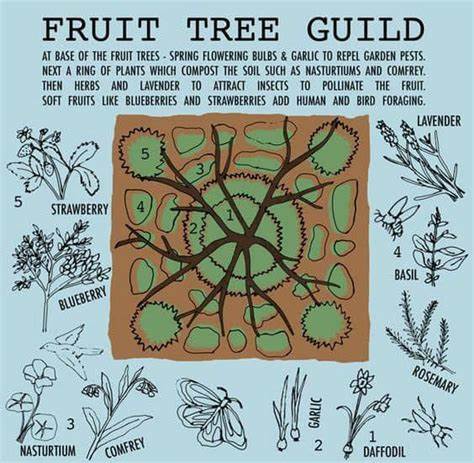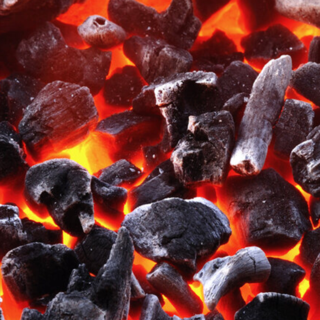 As people become more and more interested in permaculture, it’s only natural for a lot of questions to come up. This is a good thing. Questions always lead the way to new understanding, growth and healing. Goddess knows we have a lot to un-learn, grow out of and heal from. And permaculture is an excellent, practical and efficient way of doing this.
As people become more and more interested in permaculture, it’s only natural for a lot of questions to come up. This is a good thing. Questions always lead the way to new understanding, growth and healing. Goddess knows we have a lot to un-learn, grow out of and heal from. And permaculture is an excellent, practical and efficient way of doing this.
A big source of confusion comes from understanding the difference between organic gardening and permaculture. It’s totally understandable as there is, in fact, a lot of overlap between the two. So this article will be devoted to untangling the confusion.
What IS the Difference Between Permaculture and Organic Gardening?
This is a good question. Because, in the course of starting to learn about permaculture, it’s easy to think it’s no different than organic gardening. There is a lot in common, at least on the surface. While permaculture uses many of the same techniques, practices and methods as organic gardening, it goes way further. It encompasses a whole world view and way of life as well as a range of disciplines. Organic farming principles are combined with agroforestry, water reclamation, sustainable development, integrated farming and applied ecology. It’s not just a list of do’s and dont’s.
Becoming a Certified Organic farm is an intensely complicated, political and arduous process. It takes many years. While it’s definitely a good thing, in the Big Picture, being an important and necessary step away from the toxic influences of Big Ag, it still kind of misses the point. It is very rigid and exacting. Which Nature is not. Yet, missing some important points is part of the process in un-learning the lies we have internalized for so many thousands of years. It can’t be helped. So, that does not make it unworthy in any way.
If you’re not able to grow your own, buy Certified Organic if you can afford it…and even if you can’t. But don’t be afraid of something that is “merely” grown organically.

Because certifications are not what Nature does. They are contrivances for our human brains. It’s best not to conflate the two. Yes, certification processes provide a great check list so we can be sure to cover all our bases, so that’s super helpful. And they provide assurances to the consumers of the produce, too. So that’s also good. It allows for voting by spending, which alters the whole supply and demand structure. Also good. There is nothing bad to say about organic gardening.
Permaculture, however, is more concerned with both the immediate impact and how that fits into the Bigger Picture. And changing the Bigger Picture. It’s better to use locally produced stuff that, while not “Certified Organic,” is still organically grown. Imports are bad for the ecology and the local economy. Permaculture, like Nature, is more fluid.
There is also a difference in trust and control issues. Permaculturists trust Nature’s intelligence and know that change is the only constant, that eco-systems are not static but fluid, and that there is no one right way, no one right combination for a plant community, or guild, to grow and thrive. They also understand the power of plant remediation and know that they are not self-appointed gods, in control of everything, but that the garden takes on a life of it’s own. It can and should have the freedom to proceed as it best sees fit. Permaculturists are more like stewards or facilitators of this process than a boss who insists that it all proceed in a particular way. Even with a design for their property in mind, there is still the humble assumption that their design is merely a starting point. It is a healing process for depleted, deforested land. It needs to start somewhere. 
And with trust in the process, they know something even better than what they first imagined will emerge. By following a tried and true set of Principles, permaculturists not only reduce their ecological footprint, but create healty and self-sustainable eco-systems that are part of a varied, healthy lifestyle and help regenerate the earth.
So, for this reason, the permaculturist is not limited by only being able to bring in Certified Organic shrubs and trees. If they can find specimens grown in a Certified Organic nursery, great. But it doesn’t have to be. Increasing diversity is more important, in the long run, than adhereing to rules. Plus, whatever non-certified organic issues these plants may have, they will be mitigated by all the pioneer plants and nutrient accumulator plants. It all comes out in the wash.
In a purely visual sense, permaculture gardens look very different from regular organic gardens. A permaculture garden is a more complex design, containing no rows of the same plant, or any bare soil…or, at least, very little. These are not merely aesthetic concerns, even though it is more beautiful. There are excellent reasons for it.
Rows and rows of, say, carrots, act as a beacon to insects who love carrots. This kind of beacon, in turn, requires something to counteract those insects. Making up batches of insect repellant out of soap and lemon juice (or whatever the prefered recipe is) is obviously better than using Glyphosate.
No comparison.
But then you have to hand wash each and every plant with it. This is very labor intensive.
Likewise, all the bare soil between the rows need to be weeded. Endlessly.
In permaculture, this kind of labor intensiveness is avoided by leaving all/most of the heavy lifting to Nature. Those rows and rows of carrots would, instead, be planted in a scattered way, amongst a kaleidoscope of other plants. Insectary plants, that attract predatory and parasitic wasps…who eat all those pests. Strong smelling plants like lavender, marigolds and peppermint disguise and distract insects from detecting those delicious carrots they love so much in the first place. And companion plants who compliment and support the growth and fecundity of other plants.
While it is easier…maybe…to harvest a million carrots all at once, when they are laid out in neat rows, (it’s also more back breaking) it’s actually better and more healthy to harvest a variety of whatever fruits, nuts and vegetables are ready at the moment. This variety can be taken to the farmer’s market and sold, insted of being shipped by truck to all quarters. This is a completly different kind of economy, too, when looked at in that light.
Fertilizers. Organic gardeners use organic fertilizers…which are presumably better than chemical fertilizers. But permaculturists again, get Nature to do the fertilizing. Instead of dumping excess nitrogen…be it organic or synthetic… into an already over taxed water system, permaculturists follow Nature’s plan for fertilization. Planting nitrogen-fixing plants, nutrient accumulators, mulch plants, innoculating with mushroom spore, encouraging soil organisms, creating hugelkutur beds, vermicomposting. Plus, closing the loop on waste products. Not only do kitchen scraps find their way into the nutrient cycles, but “waste” products from the gardens themselves. After harvesting the beans, for example, the stalks, leaves and stems become mulch to decompose into the soil and enrich it for the next year. This eliminates the need to rely on outside sources. And it’s done gently, with naturally occurring amounts and processes.
We really already have everything we need.
Permaculturists also do not rely on tapwater so much. Grey water is utilized. And water is harvested and stored through the use of rainwater catchment systems, swales, hugelkultur, rain gardens and the like. Storing water in the ground is a great place for it to be. Not only does it maintain the right moisture balance for the plants, but it does not put more strain on the aquafers, and being naturally purified it does not contaminate the waterways with more pollution.
In Conclusion
Permaculture is a very thoughtful, intentional and nature inspired way of growing food. It creates a huge variety of highly nutritious food, which is good for us and our health and also good for the health of the planet. It is quite gentle compared to the intensive agriculture we’ve come to see as “traditional.” There is no tilling every year. This is detrimental to soil health, requiring the addition of ever more store bought stuff to counter act the damage. But, in reality, it only causes progressivly more damage.
If you want to create a haven of health, help heal the Earth and leave a productive, fertile plot of land to future generations, then permaculture will enable you to do this. Go for it!
And, as always, please leave a comment. I love to hear from you!







Organic gardening, with its focus on natural methods and minimal impact, has long been a beacon for those seeking a healthier and more environmentally conscious way to grow food. The principles of permaculture, on the other hand, take this concept a step further, embracing not just sustainable practices, but a holistic design that mimics the harmonious cycles of nature.
Yes. Organic gardening is definitely a step in the right direction…a huge step…but permaculture is where it’s at!
I enjoyed your post comparing the difference between organic and perma-culture. I like to keep a sense of order in my disorder. Weeding rows in the garden does get labor-intensive, as you noted. It would be nice to see a garden you created, however, as you mentioned – the garden – in a way – creates itself, as we allow it to.
Yes…life has a way of taking on a life of its own!
I’m intrigued by the differences between permaculture and organic gardening. The article highlights permaculture’s holistic approach and its focus on ecosystem dynamics, which goes beyond traditional cultivation methods. I’m curious about the practical aspects of implementing permaculture, like managing pests and maintaining soil health in such a complex system. If anyone has firsthand experience or resources to delve deeper into these topics, I’d love to hear more. It’s fascinating how permaculture aims for sustainable, diverse ecosystems while challenging the conventions of traditional gardening.
Actually, permaculture…the practice, not the name…is the real Tradition. The destructive monoculturing that has become normalized is the newbie. And it’s caused a lot of damage in a short time. Short, in relation to how long we have existed as a species. Managing pests and maintaining soil health in a monoculture context is a lot of work, an infinite amount of work, because it goes so intensely against the forces of Nature.
Whereas in permaculture, it’s more a matter of doing everything you can to ensure a very diverse community of plants, insects, birds, mice, etc., and then standing back while it takes on a life of its own. When the proper predatory and parasitic insects are in the neighbor hood, because you’ve planted all the flowers they love most, they and/or their larvae will eat those pests. Likewise, a thriving community of soil organisms is devastated every time the soil is violently tilled up every year. Not doing that is just one aspect of sustaining these important critters.